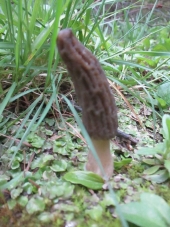
 1
1




New location. Zone 6b, acid soil, 30+ inches of water per year.
https://growingmodernlandraces.thinkific.com/?ref=b1de16
Growingmodernlandraces.com affiliate
 1
1




Try harder, fail better... stay golden.
Eventually everything connects, keep doing the things




Leigh Martin wrote:I would suggest inoculating species during a time of year that correlates with the spawn run temperature of the mushroom you want to grow.
Start with a small patch of area where you can observe mycelial growth. There is no reason why you should ‘lose’ a mushroom species that you’ve introduced, unless it is not in a compatible environment. If it’s in happy growth conditions it should stay forever.
Starting with a small patch would ensure more intentional observation and acclimatizing the species to your environment.
Leigh Martin wrote:Also consider a pond to increase humidity in a microclimate.
New location. Zone 6b, acid soil, 30+ inches of water per year.
https://growingmodernlandraces.thinkific.com/?ref=b1de16
Growingmodernlandraces.com affiliate
 1
1




Try harder, fail better... stay golden.
Eventually everything connects, keep doing the things




New location. Zone 6b, acid soil, 30+ inches of water per year.
https://growingmodernlandraces.thinkific.com/?ref=b1de16
Growingmodernlandraces.com affiliate





|
He got surgery to replace his foot with a pig. He said it was because of this tiny ad:
donating to the empire
https://permies.com/t/131224/donating-empire
|





